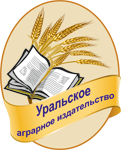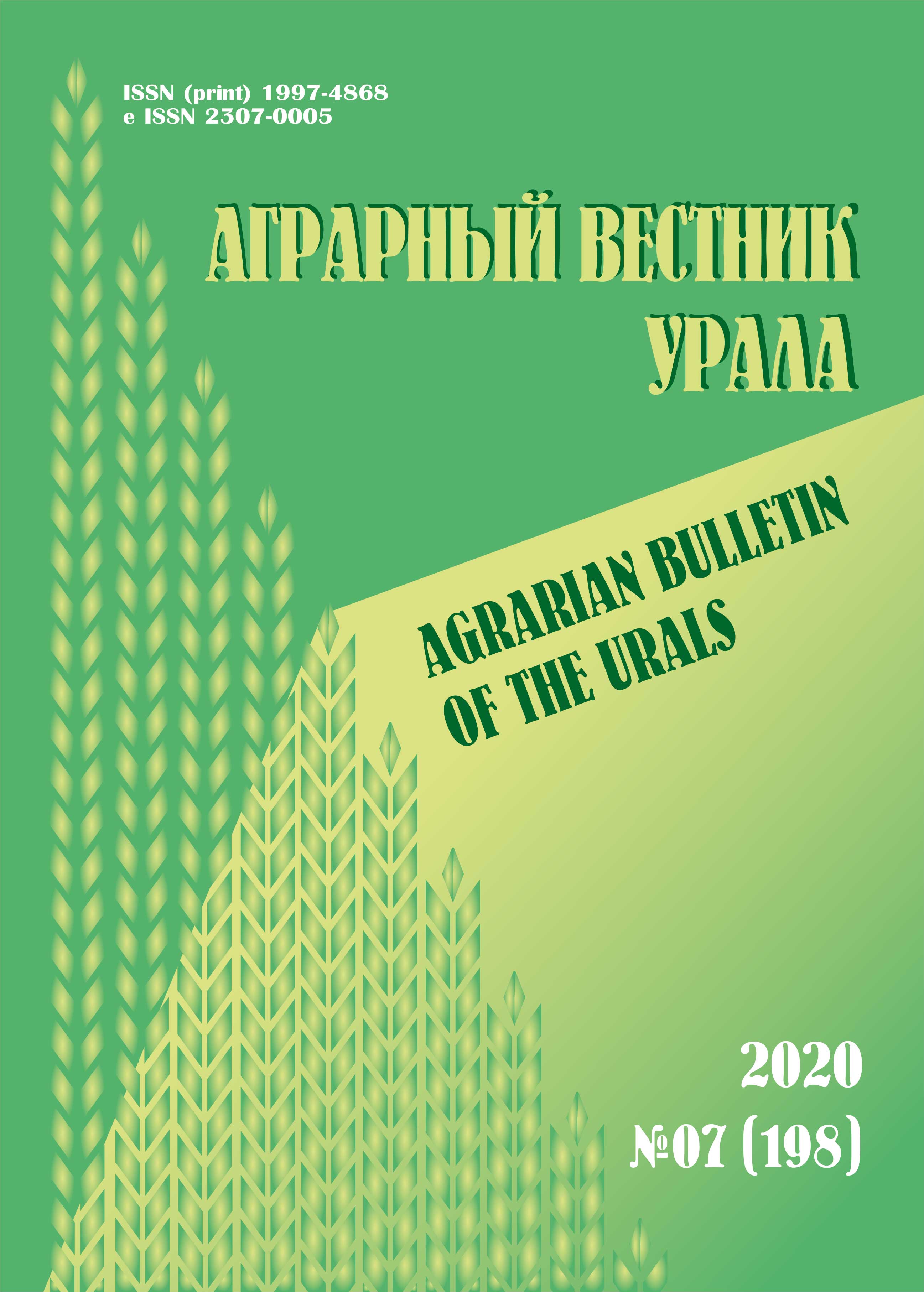Russian Federation
Abstract. The purpose of this work is to study the collection of soybeans of various origins in order to identify new early-ripening and high-yielding varieties adapted to the soil and climatic conditions of the Akmola region. Scientific novelty. Soybean varieties of various origins are characterized by the range of variability of economically valuable traits, as the basis for analysis and search for criteria for the selection of source material for practical breeding. Methods. The research uses a collection of soybeans of various origins. The studies were carried out in comparison with the best zoned varieties (standards) in rain-fed conditions. The laying of the collection nursery, phenological observations, assessments and records of the state of plants by phases of development were carried out according to the VIR methodology. Results. Soybean varieties Heihe 58, Heihe 59, Heihe 33, Heihe 35, Heihe 44, Heihe 49, Heihe 49, Beidou 26, Beidou 36, Beidou 43, Beidou 51, Huajiong 2 and Suiyang 1 are distinguished by comparative precocity and yield. The conditions of the growing season had a significant impact on the passage of the phases of growth and development of varieties. According to the shedding indicator, varieties Kendou 68, Longken 336, Heihe 44, Nur+ and promising number No. 75 were identified, which were characterized as less stable. During the research period, damage to the studied soybean varieties by pests was not noted. The main indicator of grain quality, protein content was within high limits. At the standard Bar grade level, the following grades were Heihe 58, Heihe 59, Heihe 33, Heihe 35, Heihe 44, Heihe 49, Heihe 49, Beidou 26, Beidou 36, Beidou 43, Beidou 51, Huajiong 2 and Suiyang 1. The varieties identified as a result of research can be used in practical breeding.
variety, collection, soybean, breeding, yield, lodging capacity, protein, plasticity of varieties
1. Kireev A. K. Zernobobovye kul'tury i ustoychivoe zemledelie // AgroӘlem. 2014. № 4. C. 12-15.
2. Lukomec V. M. Sovershenstvovanie tehnologii vozdelyvaniya soi // Delovoy vestnik APK. Stavropol'skiy kray. 2017. № 4 (59). S. 60-71.
3. Gadzhiumarov R. G. Vliyanie tehnologiy vozdelyvaniya na rost, razvitie i urozhaynost' soi v zone neustoychivogo uvlazhneniya Central'nogo Predkavkaz'ya // Glavnyy agronom. 2018. № 3. S. 23-28.
4. Kirsanova E. V., Alfeeva E. L., Kolosova E. Yu. Nauchnoe obespechenie proizvodstva soi // Studencheskiy nauchnyy forum - 2014: materialy VI Mezhdunarodnoy studencheskoy nauchnoy internet-konferencii. Orel, 2014. S. 24-31.
5. Parahin N. V. Ocenka effektivnosti sistem gerbicidov v agrocenozah razlichnyh sortov soi v zavisimosti ot sposoba osnovnoy obrabotki pochvy // Zemledelie. 2017. № 2. S. 39-42. EDN: https://elibrary.ru/YLMWPZ
6. Qiu C. Sh, Stybayev G., Wang Y. F., Begalina A. A., Long S. H., Baitelenova A. A., Guo Y., Arystangulov C. C., Kang Q. H., Kipshakpayeva G. A., Zhao X. L., Tussipkana D. Flax Varieties Experimental Report in Kazakhstan in 2019 [e-resource] // Journal of Natural Fibers. 2020. No. 09. Pp. 1-10. URL: https://ur.booksc.eu/book/83640367/fc5450 (date of reference: 21.11.2021).
7. Nekrasov A. Y. Soybean: Sources from the VIR collection of genetic resources // Proceedings on Applied Botany, Genetics and Breeding. 2020. Vol. 181. Iss. 1. Pp. 48-52. DOI: https://doi.org/10.30901/2227-8834-2020-1-48-52; EDN: https://elibrary.ru/QMLIIA
8. Fudge J. B., Lee R. H., Laurie R. E., Mysore K. S., Wen J., Weller J. L., Macknight R. C. Medicago truncatula SOC1 genes are up-regulated by en-vironmental cues that promote flowering [e-resource] // Frontiers in Plant Science. 2018. Vol. 9. Article number 496. URL: https://www.frontiersin.org/articles/10.3389/fpls.2018.00496/full (date of reference: 23.11.2021).
9. Zelencov S. V. Perspektivy selekcii vysokobelkovyh sortov soi: modelirovanie mehanizmov uvelicheniya belka v semenah // Maslichnye kul'tury. Nauchno-tehnicheskiy byulleten' Vserossiyskogo nauchno-issledovatel'skogo instituta maslichnyh kul'tur. 2016. Vyp. 2 (166). S. 34-41. EDN: https://elibrary.ru/WXSKKV
10. Agafonov O. M. Vliyanie obrabotki semyan rizobial'nymi preparatami na formirovanie fotosinteticheskogo apparata rasteniyami soi // Agrarnaya nauka, tvorchestvo, rost: sbornik nauchnyh trudov po materialam V Mezhdunarodnoy nauchno-prakticheskoy konferencii. Stavropol', 2015. S. 16-18. EDN: https://elibrary.ru/TTCBRL
11. Sozonova A. N. Fenologicheskoe razvitie sortov soi sibirskogo i severnogo ekotipov v lesostepi Tyumenskoy oblasti // Razvitie nauchnoy, tvorcheskoy i innovacionnoy deyatel'nosti molodezhi: materialy IX Vserossiyskoy nauchno-prakticheskoy konferencii molodyh uchenyh. Tyumen', 2017. S. 287-291. EDN: https://elibrary.ru/YROLBK
12. Didorenko S. V., Abugalieva S. I., Zatybekov A. K., Gerasimova E. G., Sidorik I. V., Turusbekov E. K. Izuchenie skorospeloy kollekcii soi v usloviyah Severnogo, Vostochnogo i Yugo-vostochnogo Kazahstana // Іzdenіster, nәtizheler - Issledovaniya, rezul'taty. 2017. № 4 (76). S. 294-304.
13. Krasovskaya A. V. Kormovye boby i soya na zerno i semena v OOO «Sibiriya» // Agrarnyy vestnik. 2016. № 11. S. 54-55.
14. Sozonova A. N. Ocenka sortov soi po urozhaynosti i parametram adaptivnosti v lesostepi Tyumenskoy oblasti // Permskiy agrarnyy vestnik. 2019. № 1 (25). S. 75-80 EDN: https://elibrary.ru/URXTVT
15. Abugalieva A.I. Geneticheskoe raznoobrazie sortov soi razlichnyh grupp spelosti po priznakam produktivnosti i kachestva // Vavilovskiy zhurnal genetiki i selekcii. 2016. № 3. S. 303-310. DOI: https://doi.org/10.18699/VJ16.168; EDN: https://elibrary.ru/WLVKEB









